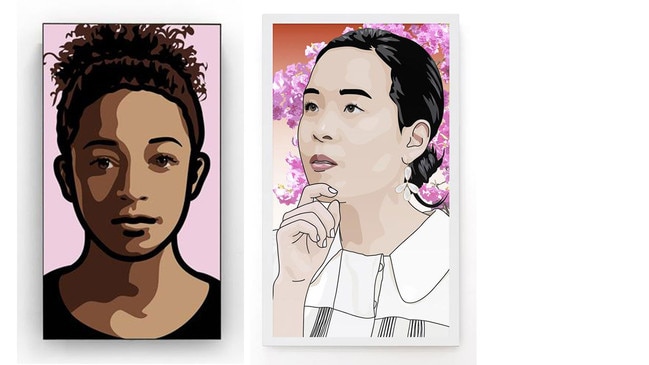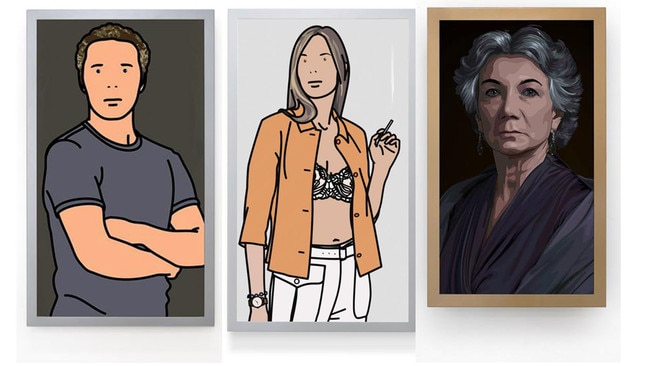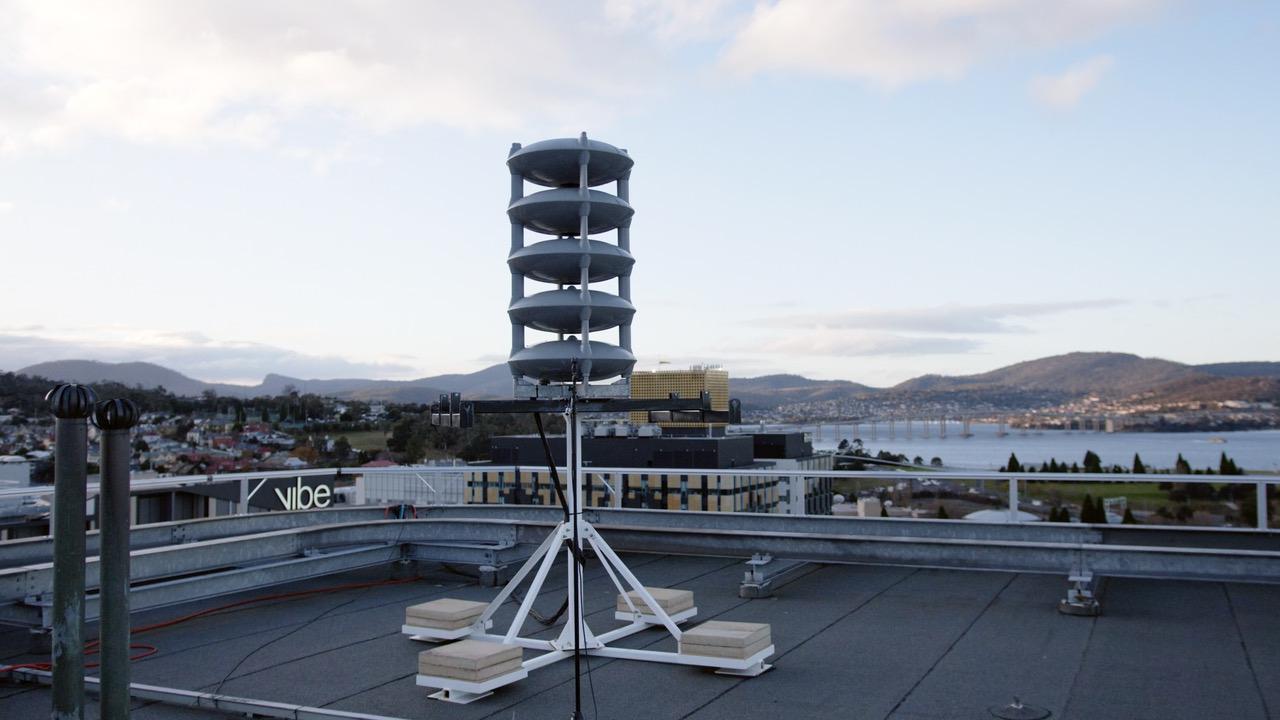Disconnection draws a blank
Artists have sought for centuries, and indeed millennia, to paint faces with expressive features.

Artists have sought for centuries, and indeed millennia, to paint faces with expressive features, primarily in narrative pictures in which the different figures need to tell a story or more subtly to evoke the feeling and meaning of the scene depicted, whether narrative or allegorical.
In early modern art theory, in fact, expression came to considered the most important of all qualities in the highest genre of history painting. There are famous anecdotes in art history such as that of Annibale Carracci realising, from the reaction of an old woman to frescoes by two of his leading assistants, that Domenichino was a greater master of expression than Guido Reni.
Expression became one of the chief preoccupations of Charles Le Brun, head of the French Academy, under the influence both of Nicolas Poussin and of Rene Descartes, whose treatise Les Passions de l’ame was published in 1649. Le Brun’s own lectures in 1667 and 1668 were accompanied by diagrams that later were published and remained influential on academic artists for the next 1½ centuries.
But not all faces have to be painted with distinct expressions. Portraits, for example, show the face at rest, because the point is not to illustrate any single emotion but to convey something of the character of the sitter, which is both what produces or generates emotions and something that is progressively shaped by the emotions that we suffer or indulge in the course of our lives.

The slightest overt expression is risky in portraits, for a smile, for example, can easily become a smirk or even drift towards a look of sadness. This is another reason that portraits virtually never show the mouth open. What the artist seeks to capture is not an actual smile but the propensity to smile, or the signs and traces of habitual smiling.
There are other cases, too, where expression must be handled with extreme restraint. In carving or painting the face of Buddha, for example, the aim is to evoke the calm and stillness of enlightenment. In painting the face of the Virgin Mary, the most important thing is an expression of gentleness and kindness. This is why in early Renaissance altarpieces of the Madonna and Child with saints and other figures, we generally can be sure that the master himself would execute the two principal faces.
It requires, in fact, considerable skill to achieve stillness of features or very gentle expressions, for we are so attuned to reading the signs of emotion in the features of others that any incidental or adventitious detail will provoke us to imagine unintended and unwanted sadness, superciliousness or irritability.
Those who look for the first time at tribal masks that are meant to be only generically frightening and impressive often see grotesque and whimsical expressions that tend to fade as we adjust to understanding these artefacts on their terms.
Even in drawing the most schematic face out of circles and dots it is hard to avoid some colouring of expression or character, so profound is our impulse to read this schema as the face of another human. This is why the bland faces of Julian Opie are so striking, at the risk of oxymoron, in their neutrality.
Others among the so-called Young British Artists of the 1980s and 90s set out to be shocking and confronting, but Opie elected insipidity and vacuity as his subjects.
His most characteristic works are faces that have been reduced to outlines with a bar of shadow for the mouth and dots for eyes and nostrils. These almost disembodied masks stare vacantly past us into the distance or, more exactly, the pupils look straight at us but they don’t focus on us or on anything else for that matter.
The absence of eyelids or of any other relevant detail is what accounts for this unfocused gaze, which gives his faces a bemused, lost and disconnected expression. And clearly it is because audiences recognise in this disconnected, even solipsistic image of the human being something about contemporary experience and the alienation of the new media age that Opie has achieved success with what are otherwise very repetitious images.
Opie’s earlier work took the form of screenprints, static and opaque images and some of the works in the present exhibition are large flat heads made of cut-out acrylic.
But in the more recent versions that we see in this exhibition, he has reproduced the images in digital form and displayed them on screens so that he is able to incorporate elements of animation, as in a self-portrait, Julian with T-shirt (2005) in which the face remains impassive but the chest expands and contracts as the figure breathes. Unintentionally, no doubt, the movement is exaggerated as though the figure were suffering from serious anxiety beneath his impassive exterior.
In another image, Ruth Smoking 1 (2006), smoke rises discreetly from the girl’s cigarette. But the most common new device in these works is that the staring eyes suddenly blink and then reopen to stare again. Whether this really adds anything to the meaning of the non-animated figures is questionable, but the temptation of animation, once the images became digital, was no doubt irresistible.
Some of Opie’s most distinctive works, apart from the staring heads, are moving figures, either a single figure or a couple — noting the different rhythms of male and female bodies in motion — or even a crowd of figures walking in a street.
Like all such work, these exist in countless iterations; it is what allows artists such as this to produce a vast amount of material, all essentially the same, to satisfy the art market and to promote themselves through museum shows.
Opie is another of those artists who, although not in the first rank of fame or notoriety, has achieved the sort of cruising altitude of international fame where they have become a staple of the international contemporary art establishment and will be supported for the foreseeable future, not only by the private sector but also by the international network of museums and galleries which, similar to the National Gallery of Victoria and others in Australia, are constantly in need of new contemporary content.
Opie’s walking figures often are executed on panels of LED lights, using the same technology used for advertisements and for newsflashes in public squares. Here, such figures greet the visitor outside the NGV on St Kilda Road, and inside there are many more examples.
One large room, notably, has a long LED panel along the far wall, with figures crisscrossing it in both directions, while opposite this is a wall covered in black outlines of walking figures. Opie has certainly got a tremendous lot of mileage out of one idea.
This seemingly rather indifferent wall, which we might imagine was mainly a bit of exhibition installation, turns out to the favourite spot for an endless succession of young girls to take selfies or have themselves photographed for social media. The insatiable narcissism of nobodies is always surprising but it reminds us that, in the end, all narcissism is equally futile.
The most interesting thing about the LED crowd scenes is the way that figures walking in opposite directions not only overlap and intersect but, since they are all composed of the same banks of LED bulbs, literally blend with each other as they pass, as though they were only relatively distinct entities, merging into and emerging from a common and unconscious mass. In some more recent works, Opie has attempted landscapes, drawing on the example of Japanese woodblock prints no doubt because of their simplified use of flat areas of colour, but adding in details of animation in the lapping of water or the fall of rain.
More recently, too, Opie’s digital heads have grown more detailed and semi-naturalistic, now recalling the way that serially rephotocopied photographs break down into increasingly polarised areas of light and shade. And in one case the naturalism is taken even further, which makes the relation between these pictures and their photographic origins increasingly questionable.
What is particularly curious, though, is the animation introduced into these new and semi-naturalistic heads, among the most naturalistic of all is Marion in Purple Shawl (2010), with naturalistic blinking eyes and dangling earrings that are inexplicably swinging. Another is Joo Yeon Contemplates Her Imminent Wedding (2009), with naturalistic blinking eyes and some other animated details.
If this description reminds one of those children’s dolls that open and close their eyes as you tip them up, Imogen (2013), whose features change from smiling to serious and back again, made me think of the “personal companion” robot Harmony that was included in the recently reviewed exhibition Perfection at the Melbourne Science Gallery. This work is like a test for the artificial intelligence that will animate such robots with ever-greater degrees of sophistication as they emulate the effects of real human emotion and real interaction.
But, conversely, it reveals that Opie is reducing real people — the point is emphasised by the fact he names even the anonymous walking-stick figures — to cartoonish schemata with no inner life, mechanically simulating the physical movements that should be the expression of emotion. The result is curiously reminiscent of Le Brun’s mechanical theory of human expression, in which each movement of the eyebrow or the lip could be accounted for in the manner of a mechanical or hydraulic system.
But, ultimately, one is left with the question of why anyone is drawn to this art of affectless disconnection. Is that really what our lives feel like today? The blank eyes staring into nothingness, without reflection, without self-awareness, remind us a little of the eyes we see all around us today, fixated on screens, looking into the abyss of illusory or useless information.
Or perhaps Opie’s catatonic faces appeal to audiences weary of the superficial but unrelenting mental agitation of that media world, of messages, news feeds, opinion and indignation; perhaps they even look to many people like the features of calm and self-possession. Watching visitors look at these works in the exhibition, or rather take pictures of them on their smartphones, it was hard not to feel that they simply were drawn to immobility and fixity.
In the end, the work is undeniably slight and ultimately commercial, if not actually kitsch; the most damning thing one can say about Opie’s work, in fact, is that it takes such a short time to see the whole exhibition and to understand his very limited repertoire of tricks.
The contrast with the nearby Escher exhibition, which demands hours of scrutiny and is full of work that is technically and intellectually absorbing, is a cruel one.
Opie’s work is ultimately less revelatory than symptomatic of disorientation, less expressive of boredom than simply boring, mechanical and formulaic.
Julian Opie
National Gallery of Victoria, Melbourne, until February 17




To join the conversation, please log in. Don't have an account? Register
Join the conversation, you are commenting as Logout